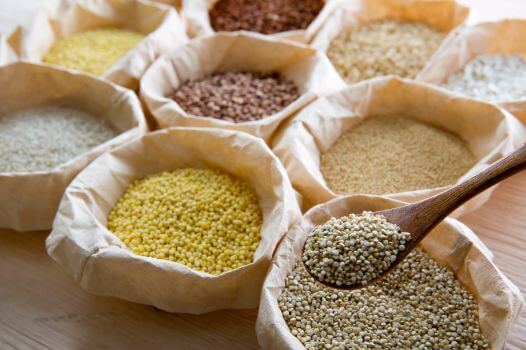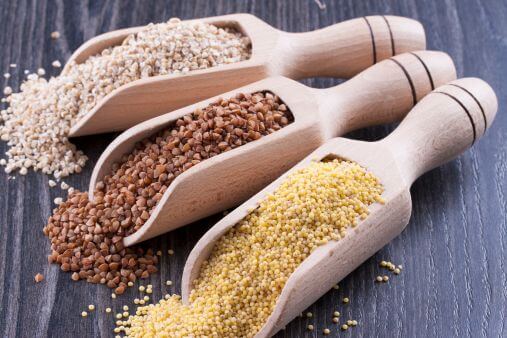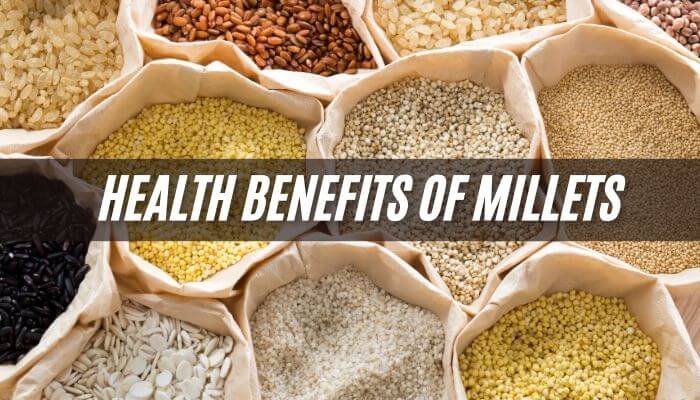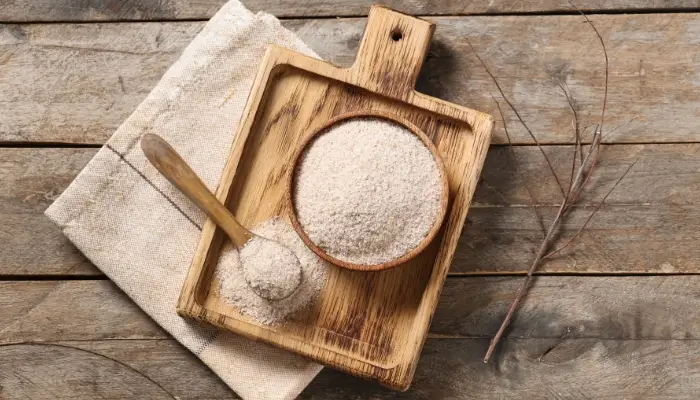Introduction
Millets are another superfood that has come back into popularity in recent years due to their extraordinary health attributes and richness in nutrients. These ancient grains, which had been a staple in many parts of the world for centuries, were largely forgotten as the modern grains came to dominate. Today, millets are regaining popularity after people have discovered their various benefits to the body, health, and nature. Today, let us take a deep dive into the top 10 health benefits of millets, explore their types, and how to make the most of this nutritious grain.
Also Read: 10 Powerful Talbina Benefits You Need To Know For Optimal Wellness
Types of Millets and Their Benefits

Millets come in various types, each offering unique benefits and nutritional profiles. Let us look at some popular varieties and their specific health advantages:
1. Ragi (Finger Millet)
Ragi is high in calcium and is great for your bone health. It is a good option for anyone who does not want dairy products but would like to supplement with more calcium.
2. Jowar (Sorghum)
Jowar contains a high amount of protein and iron, thus good for enhancing energy and maintaining the health of muscles. It is also gluten-free so it’s an ideal option for people who have a gluten allergy.
3. Bajra (Pearl Millet)
Bajra consists of fiber and magnesium which helps in controlling blood pressure and cholesterol levels. It is also a very good energy source for those leading an active lifestyle.
4. Foxtail Millet
Foxtail millet is known for its low glycemic index, making it a great choice for diabetics. It helps in regulating blood sugar levels and aids in weight management.
5. Kodo Millet
Kodo millet is high in antioxidants, aiding in the reduction of oxidative stress and inflammation. It is a great choice for boosting overall immunity.
6. Barnyard Millet
Barnyard millet is a high fiber, iron, and phosphorus-rich food for heart and kidney health. In addition, it helps in controlling blood sugar, blood pressure, and cholesterol, making it a great option for diabetics and high blood pressure.
7. Browntop Millet
Browntop Millet is one of the primary reasons why you must be consuming it because of its remarkable health properties. Browntop millet is heart-healthy, it lowers LDL cholesterol, stops artery clots, and helps keep the heart healthy. Being high in protein, and fiber and low in carbs, it is a powerful anti-cardiovascular health component.
8. Little Millet
Little millet contains a high concentration of antioxidants that promote immunity and protection against various infections and illnesses. It is also abundant in minerals such as magnesium, which plays a very important role in bone, muscle, and nerve health.
Each type of millet offers unique nutritional benefits, making them versatile options for a balanced and healthy diet.
Top 10 Health Benefits of Millets You Should Know

#1 High in Nutrients
Millets are a nutritional powerhouse full of fiber, protein, vitamins, and minerals such as magnesium, phosphorus, and iron. These nutrients are health-promoting, boost your metabolism, and provide sustained energy throughout the day.
#2 Aids in Digestion
Millets are packed with fiber that will help you digest and avoid constipation. Fiber is a detoxifying ingredient that will keep your digestive system functioning efficiently and smoothly.
#3 Helps in Weight Management
Millets are also a wonderful option for those who want to reduce their weight. Since they are full of fiber, you feel fuller longer, so you are consuming fewer calories. Besides, millets are low fat which is a perfect diet food for weight watchers.
#4 Controls Blood Sugar Levels
Millets are an especially healthy food because of their low glycemic index. This means they release sugar slowly into the bloodstream, thereby assisting in the regulation of blood sugar levels. They are a great choice of food for those with diabetes.
#5 Supports Heart Health
Millets are rich in magnesium, which supports regular heart rhythms and lowers blood pressure. The fiber of millet can even lower bad cholesterol to aid in preserving cardiovascular health.
#6 Boosts Immunity
The antioxidants in the millets are very rich in phenolic compounds, which fight free radicals and boost immunity. Millets can be consumed regularly to build the body’s natural defense system.
#7 Good for Bone Health
Ragi types contain an abundant amount of calcium, which is a crucial component in bone health, to prevent osteoporosis. Ragi in the diet will also go a long way in improving bone health, especially in children and the elderly.
#8 Gluten-Free Alternative
For individuals with celiac disease or gluten sensitivity, millets are an excellent choice. They are naturally gluten-free, making them safe to consume while providing all the necessary nutrients that wheat and other grains offer.
#9 Helps Reduce Inflammation
Millets have anti-inflammatory properties which can help to decrease chronic diseases. Millets have antioxidants, which prevent inflammation and are beneficial for overall wellness.
#10 Environmentally Sustainable Crop
More than the medical benefits, millets are also sustainable. They are water-efficient crops that do not need much water and can thrive on poor soils. The millets help in sustainable agriculture and they are a great option for environmentally conscious consumers.
Also Read: Kalonji Seeds Benefits: A Natural Remedy for Better Health
Millet Benefits and Risks
While the benefits of millets are impressive, it is important to be aware of some potential risks as well:
Benefits:
- Rich in essential nutrients and antioxidants.
- Promotes digestive health and helps in weight management.
- Provides a gluten-free option for those with celiac disease.
Risks:
- Excessive consumption of millets, particularly raw millets, can interfere with thyroid function due to the presence of goitrogens.
- For individuals with existing thyroid issues, it is advisable to limit millet intake or consult a healthcare professional before incorporating large amounts into the diet.
Overall, the benefits of millets far outweigh the risks when consumed as part of a balanced diet.
Uses of Millets
Millets are incredibly versatile and can be used in a variety of dishes. Here are some popular ways to include millets in your diet:
- Millet Porridge
A healthy and hearty breakfast option, millet porridge is easy to make and can be sweetened with honey or fruits for added flavor. - Millet Flour
Millet flour can be used to make gluten-free bread, chapati, pancakes, and even cookies. It’s a nutritious substitute for regular flour. - Millet Salad
Cooked millets can be tossed into salads for an extra boost of nutrients and a satisfying crunch. Combine with veggies, herbs, and a light dressing for a wholesome meal. - Millet Khichdi
This is a traditional dish made with millets, lentils, and spices. It’s a comforting and nutritious option for lunch or dinner. - Millet Smoothies
Blend cooked millets into your smoothies for a fiber-rich, filling drink that can serve as a quick breakfast or a post-workout snack.
Simple and Healthy Fermented Millet Drink (Ambali) Recipe
Fermented millet drinks are a traditional favorite in many parts of India. Known as Ambali or Koozh, this refreshing drink is not only delicious but also rich in probiotics, making it great for gut health. Here is a simple recipe you can try at home:
Ingredients:
- 1/2 cup millet (Ragi/Finger Millet, Bajra/Pearl Millet, or a mix of millets)
- 3 cups water
- 1/4 cup buttermilk (for fermentation)
- Salt to taste
- Optional: Chopped onions, green chilies, and coriander leaves (for extra flavor)
Instructions:
Step 1: Soak the Millet
Rinse the millet well under running water. Soak it in enough water for about 4-5 hours or overnight for better fermentation.
Step 2: Cook the Millet
Drain the soaked millet and transfer it to a pot. Add 2 cups of water and cook on medium heat until the millet becomes soft and porridge-like. Stir occasionally to prevent sticking.
Step 3: Cool and Ferment
Allow the cooked millet porridge to cool to room temperature. Once cooled, add buttermilk, and mix well. Cover the mixture and leave it at room temperature for 8-12 hours to ferment. The longer you ferment, the tangier and probiotic-rich it becomes.
Step 5: Prepare the Drink:
After fermentation, add salt to taste and mix well. If you prefer a thinner consistency, add more water. For a savory version, mix in chopped onions, green chilies, and coriander leaves.
Step 6: Serve
Pour the fermented millet drink into a glass and serve chilled. It is a perfect summer drink or a healthy breakfast option.
Health Benefits:
This fermented millet drink is packed with probiotics, helps improve gut health, aids digestion, and provides essential nutrients. It is also a fantastic way to stay hydrated and refreshed.
Conclusion
Millets are a nutrient powerhouse and can be incorporated into so many dishes. From digestive to heart-health benefits, millets have so many uses. By consuming various varieties of millets, you can get all the health benefits you are after and contribute to a sustainable agricultural process. So why not start making use of millets in your kitchen today and check out the great health benefits of millets?
FAQs about Millets
Q1: Is it healthy to eat millet every day?
Yes, millet is nutritious and can be part of a healthy daily diet, offering benefits like improved digestion and stable blood sugar.
Q2: What are the benefits of millet drink?
Millet drink is rich in antioxidants, vitamins, and minerals, supporting digestion, immunity, and heart health.
Q3: How many calories are in millets Java?
Millets Java typically contains 150-200 calories per serving.
Q4: Is fermented millet healthy?
Yes, fermented millet improves digestion, boosts nutrient absorption, and supports gut health.
Q5: Which millet is good for fermentation?
Pearl millet and finger millet are commonly used for fermentation.



